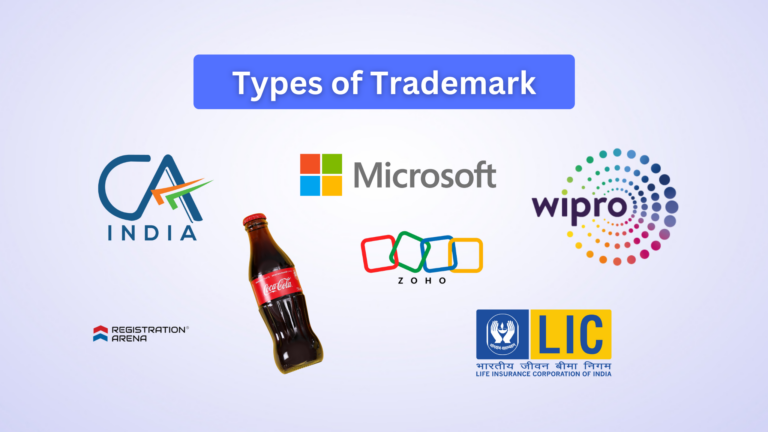What is Trademark
A Trademark is a kind of protection towards Intellectual Property. This distinguishes various products and services by providing a brand value to them in the market. This non-deliberately attaches a quality value to all the products. The process of applying for the trademark is lengthy and it requires the owner to file an application and attach all the necessary documents to get the privilege. The trademark opposition is necessary for protection of the Intellectual Property rights.
Process for registration of Trademark
The process of trademark opposition in India is very simple and yet intricate. The steps to do so are :
- Filing the application for brand name registration with the required fee and soft copy of the trademark. This can be done by Manual Filing and E-Filing.
- The Trademark Office will check whether all the formalities of Trademark are met or not and mark the Trademark application as “Formalities Check Pass or Formalities Check Fail”
- The Registrar will go through the application and will check if all the required details are met under Trademarks Act 1999 and will either Accept or Raise Objection.
- After acceptance of registrar, trademark application is published in the Indian Trade Mark Journal.
- If the application does not face any opposition or objection, your application is accepted and registered by the Registrar.

What is Trademark Opposition
A trademark opposition is filed by a third-party against the registration of your Trademark. The same accounts for various oppositions from individuals and companies regarding the content of the advertisement and re-advertisement of the application. The opposition party could raise opposition against the trademark application under the Trademark Act of India. The law states some guidelines under which the opposition can be filed. The hearing is a place where the matter of both the applicant of trademark and the applicant of the opposition is heard and a decision is taken accordingly.

The basic motive of publishing the Trademark Journal is to make the Trademark application public so that the people get the knowledge of all the content involved within the application. If a person feels that his or her Intellectual Property Rights stand violated due to the stated privileges in the application, he or she can file an opposition within the given time period. It is important to note that the opposition application is filed within the given time frame after the publication of the journal. If the opportunity of filing the application is once lost, it is lost forever.
After the deadline bypasses, and if any opposition is not filed, the Registry is obligated to continue to provide the Trademark privileges to the applicant.
Objection vs Opposition
People usually confuse the Opposition application with the objection process. The Trademark application goes through various stages before getting a green flag. The objection is the name given to the very initial stage of the process where the trademark application is rejected by the Trademark Examiner of India on several listed grounds. This can be over-ruled by presenting the reply to Objection raised by the registrar in Examination Report of such Trademark.

The various grounds on which the Objection is done are:
- Section 9: Lack of distinctiveness.
- Under Section 11: Presence of similar pending trademark applications.
- Usage of obscene content on the application
- Usage of geographical and international proprietary names.

The Opposition, on the other hand, is a lengthy process that involves hearing from the side of both the parties. The Notice of Opposition can be filed by any person, not necessarily himself holding any trademark, regardless of his or her commercial or personal interests. The Notice can be filed within 4 months from the date of Publication in Trademark Journal. Once, the application of the trademark receives an opposition, the status of the applications stands “Opposed”.

Section 21 of the Trademarks Act states that ‘any person’, meaning, individual, company, trust, governmental organisation, can file an opposition. Also, if the views of two or more people match, they could be clubbed under one opposition application as opponents.
There could be any one of the following reasons for people filing the application :
- If the individual owns a similar trademark for a similar product.
- If the person is currently using the trademark, prior to the application, but has not yet registered the trademark.
Grounds for Filing the Trademark Opposition :
- If the mark is confusing with other trademarks.
- If the trademark is similar to already registered trademark
- If the trademark is prohibited under the Emblem and Names Act of 1950.
- If the mark does not contain any distinctive character.
- If the mark is likely to hurt the feelings of the people under any basis like religion, race etc.
- If the mark is likely to divide the people and deceive them.
- If the mark is contrary and is prevented by the law.
- Application for the trademark is made with bad faith.

Process of filing the Trademark Opposition in India
Filing of the Notice of Opposition
The Notice of Opposition should be filed within 4 months from the date of Publication in Trademark Journal. The Notice can be filled through the Form TM-O along with the required procedural fee. The Notice must state the credentials of the opposing parties and the grounds on which the opposition has been filed. The application first reaches the Registry which checks whether all the requirements have been fulfilled or not. If all the requirements are met, the opposition notice is forwarded to the applicant of the trademark. The applicant, then goes through all the concerns of the opposing parties and prepares his conduct for the court hearing. The court hearing takes place at the same place where the opposition was initially filed.
Filing of the Counter statement
Upon receiving of the Opposition, the Applicant of the trademark is supposed to file the counter statement of the opposition and submit the same to the Registry within two months when the opposition was filled. This application should contain clause wise counter statement for all the grounds of opposition. This again reaches the Registry which make sure if all the necessary requirements have been met, if yes, the counter statement is forwarded to the opposition party. If the applicant of trademark fails to file the counter statement within the two months, the application stands abandoned.
Submitting the evidence of the Opposition
After receiving the counter-statement, the opposition, now has two months for submitting the evidence supporting the grounds of opposition. The opposition party also has the levy of submitting to the registrar that it would not submit the evidence, however, it would only rely on the facts as stated in the Notice of opposition filed earlier, under the Rule 45. If the opposition fails to do so within two months, the opposition stands abandoned.
Submitting the evidence of the counter statement
Within two months of receiving the evidence of opposition, the applicant is now supposed to submit the proof of the Trademark for supporting his claims as under the counter statement. However, under Rule 46, he or she can also rely on the facts as stated in the Counter-Statement.
Evidence in Reply
After receiving the evidence under Rule 46, the opposition gets one more chance to submit any type of evidence in support of his opposition application within a period of one month. This is just a check process that can be avoided.
Hearing
After receiving the evidences, the Notice of Opposition and the Counter statement, the Registrar calls both the parties for hearing in the court. All the parties have to respond to the Notice of Hearing and notify the Registrar about their intention to attend the hearing. The court hearing can also be adjourned with the prior notice of three days. If all the conditions are met, the court hearing takes place and the Registrar takes a decision whether the Trademark should be offered or not. The decision of Registrar never changes and both the parties have to accept the same.
A party to a proceeding may make a request for adjournment of the hearing with reasonable cause in Form TM-M accompanied by the prescribed fee, at least three days before the date of hearing and the Registrar, if he thinks fit to do so, and upon such terms as he may direct, may adjourn the hearing and intimate the parties accordingly:
Provided that no party shall be given more than two adjournments
If the applicant is not present at the adjourned date of hearing and at the time mentioned in the notice, the application may be treated as abandoned.
If the opponent is not present at the adjourned date of hearing and at time mentioned in the notice, the opposition may be dismissed for want of prosecution and the application may proceed to registration
Rejection or Registration
This is the final step of the Opposition process where the Registrar announces his decision. If the registrar decides to go in favour of the applicant, the Opposition stands withdrawn and the registration of Trademark is given to the applicant. On the other hand, if the registrar supports the opposition, the Trademark application is withdrawn and the status stands abandoned.

What If The Registrar of Trademark Rejects The Application For Opposition ?
If the applicant of the Trademark is not satisfied with the decision of Registrar, the applicant can appeal the same to Intellectual Property Appellate Board (IPAB). The appeal against the opposition should be filed within the three months after the hearing decision. Although there is a suitable delay provided. The appeal should be filed in as stated by IPAB prescribed in Trade Marks (Applications, Appeals and Fees to the Intellectual Property Appellate Board) Rules. The applicant submits suitable fees.
The application is proof read by the Deputy- Registrar along with the presence for all necessary documents. If any editions required, the applicant should submit the edited application within two months otherwise it stands abandoned. After the submission and acceptance of application, IPAB fixes a date of hearing and it takes place under the jurisdiction as per the rule 2(m). IPAB comes to a decision after considering the points of both the parties.
If anyone of the parties fail to be present at the hearing, the case is withdrawn. If the applicant is still not satisfied with the decision of IPAB, he can apply to the High Court of his state or the Supreme Court.
Conclusion
The filing of the Opposition of the trademark is a lengthy process and also requires a lot of resources being put to use. So, both the applicant of trademark and opposition of the trademark should be clear with the intention before filing any application.
Also, it is necessary that both the parties should keep in mind the deadlines and meet them to avoid any withdrawal of applications. The intricate filing system of the Trademarks Act of India makes sure that all the Intellectual Property Rights of all the parties are met and nothing is compromised.
The trademark protects the uniqueness of the product and the opposition ensures that the intellectual property of the other parties are protected. It is necessary to carry on with the process of registration and filing of the opposition very effectively to avoid any delays. However, the Indian Registry is not yet fully in pace with that of the rest of the world. But, the people are trying to create more opportunities for the opponent parties so that the process takes place with an increased pace.
The initiative of opposition of trademarks is very effective as it allows other people’s opinions to come into action, it also allows people to get knowledge about the trademark that are in line to be registered so that they could choose wisely before registering their own trademarks.








